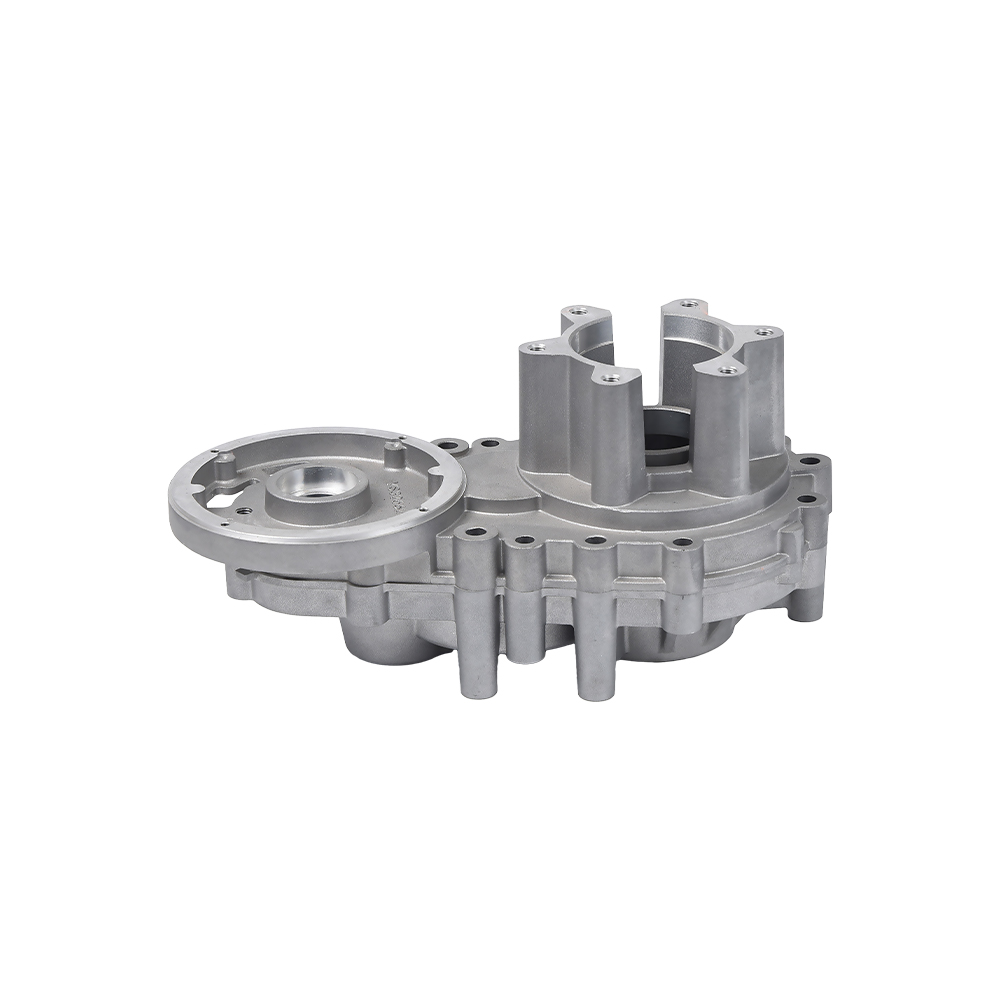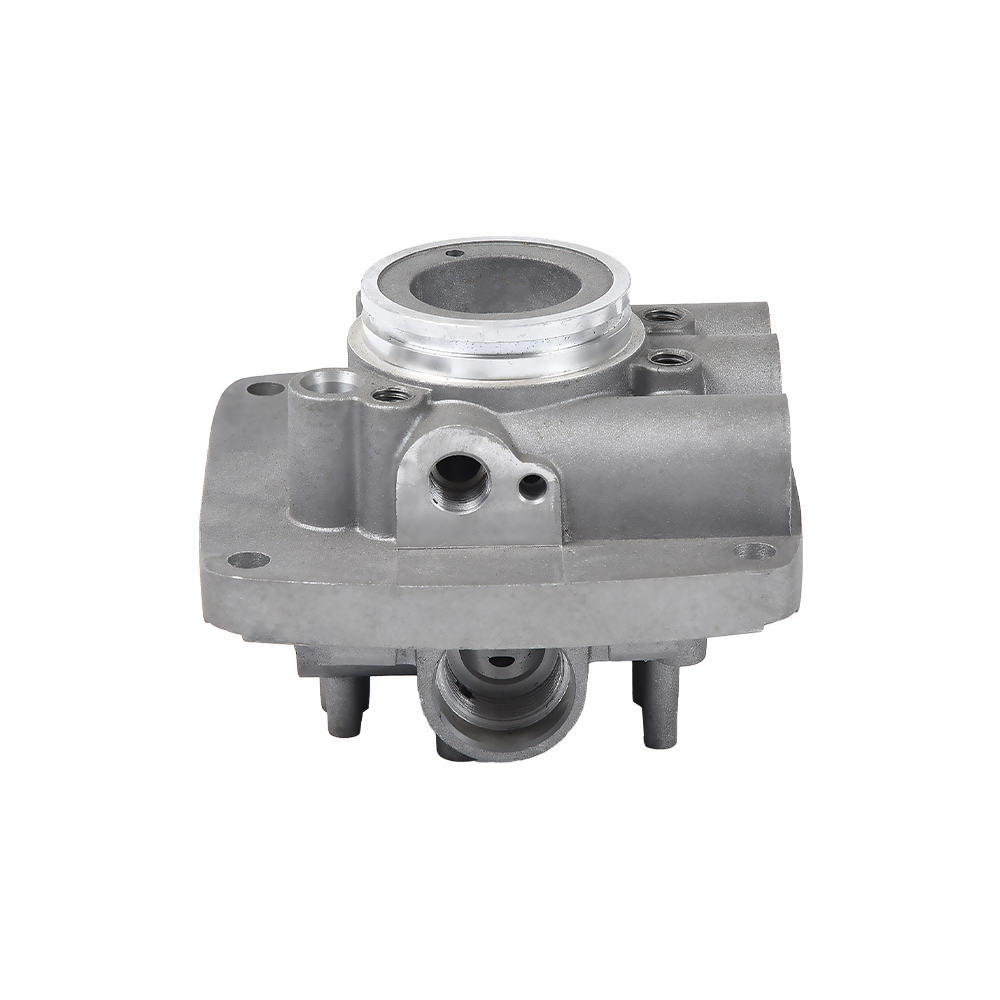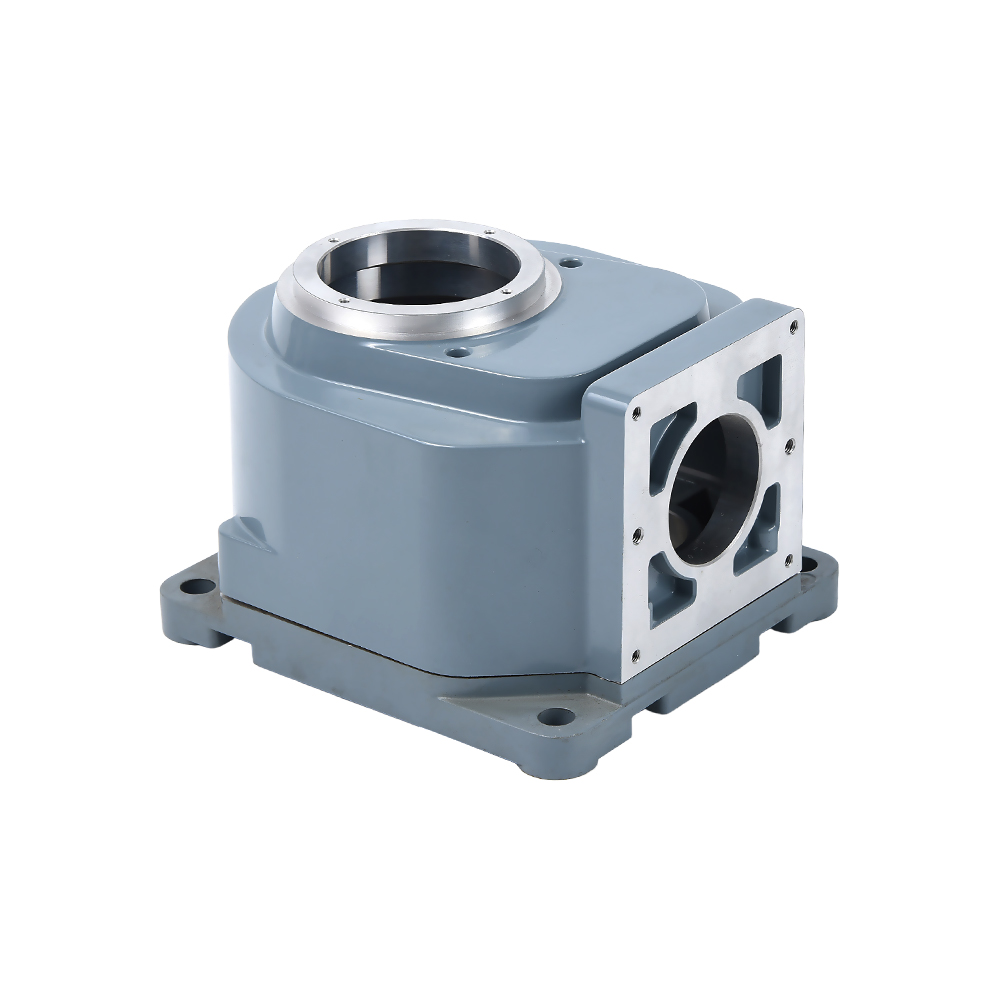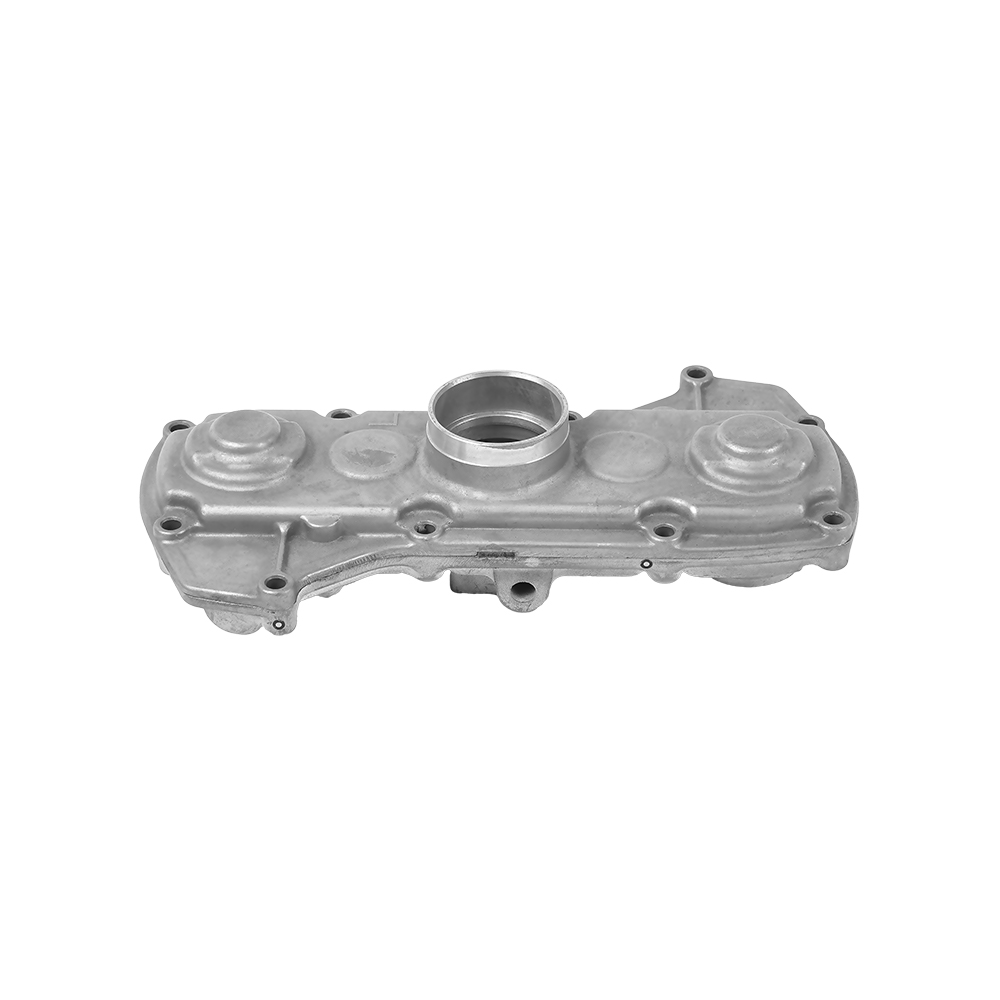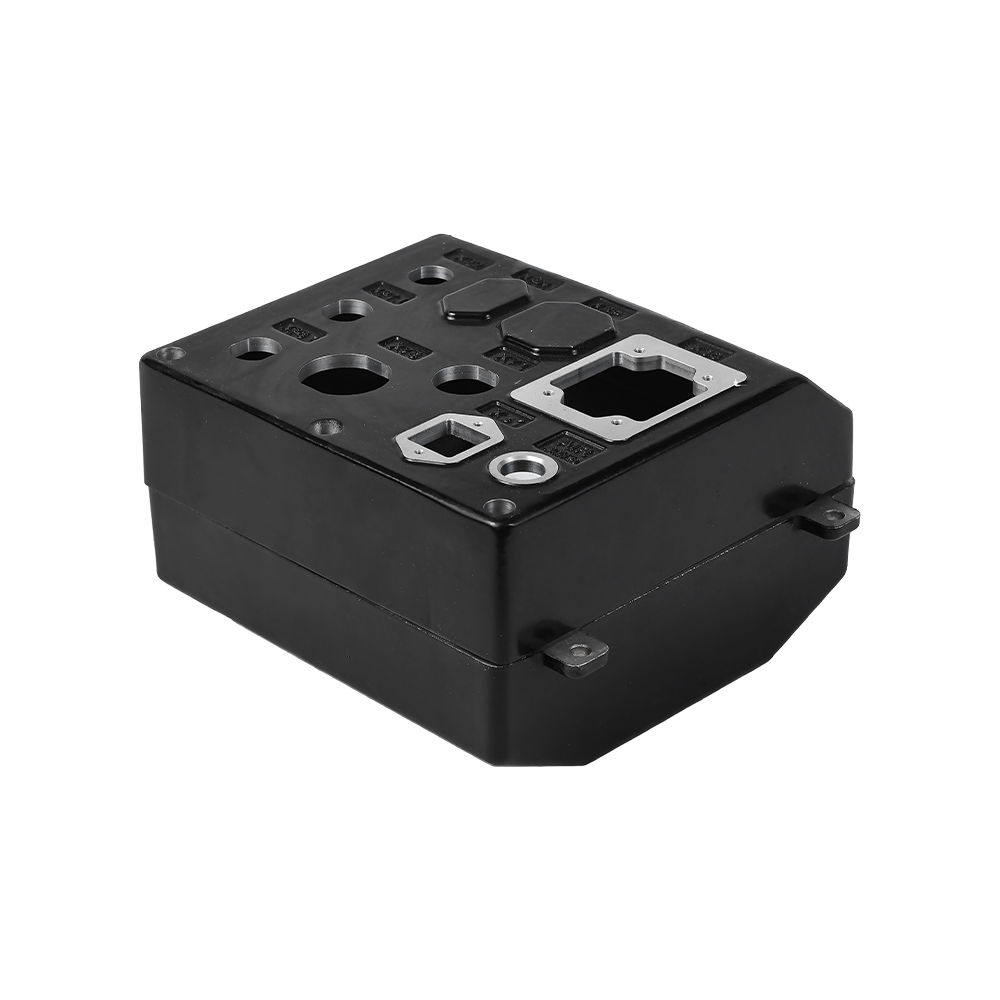Advantages of Aluminum Die Casting
1. Precision and Complex Molding Capabilities
Complex structures can be molded in one go: Parts with threaded inserts, thin walls (as thin as 0.5mm), deep cavities, or internal ribs (such as motorcycle crankcase oil passages) can be cast, reducing subsequent machining.
High Dimensional Stability: Precision machining of the die steel ensures part tolerances of ±0.1mm, making it suitable for precision assembly.
2. Production Efficiency and Cost Advantages
Ultra-High-Speed Mass Production: A single molding cycle takes only 10-60 seconds, and a set of molds can produce over 100,000 molds, making it suitable for large-volume orders.
Low Machining Allowance: High surface finish (Ra 1.6μm) eliminates extensive milling and polishing steps.
3. Excellent Material Properties
Lightweight Strength: Aluminum alloy boasts a superior strength-to-weight ratio compared to cast iron, achieving a weight reduction of over 30% (critical for automotive and aviation applications).
Thermal Management Advantages: Aluminum's high thermal conductivity naturally suits components requiring rapid heat transfer, such as radiators and engine housings.
4. Surface Treatment Compatibility
Coating Compatibility: The cast surface can be directly anodized, electroplated, or painted to enhance corrosion resistance and aesthetics.
Structural Function Integration: Heat sink fins, logo embossing, and other features can be cast, reducing the need for additional parts assembly.
5. Defect Controllability
Porosity Suppression Technology: Vacuum-assisted die casting reduces internal porosity to below 0.1%.
Heat Treatment Enhancement: T6 heat treatment increases tensile strength by 50%, meeting the requirements of high-load components.
6. Sustainability Benefits
Waste Recycling: 100% of sprues and scrap parts are remelted, achieving a material utilization rate exceeding 95%.
Lower Energy Consumption Than Machining: Over 40% energy savings compared to CNC-milled aluminum blocks.
| Advantage | Key Features | Applications |
| Complex Shape Precision | ▪️ Forms thin walls (down to 0.5mm), deep cavities & internal ribs▪️ Holds tight tolerances (±0.1mm) | Engine blocksMotorcycle crankcasesElectronic housings |
| Mass Production Speed | ▪️ Cycle time: 10–60 seconds per part▪️ Mold lifespan: 100,000+ cycles | Automotive partsConsumer electronicsPower tools |
| Superior Strength-to-Weight | ▪️ 30% lighter than steel/iron equivalents▪️ Retains structural integrity under stress | Aircraft componentsE-bike framesRobotic arms |
| Thermal & Electrical Management | ▪️ Excellent heat dissipation▪️ Shielding against electromagnetic interference | Heat sinksEV battery traysLED housing |
| Surface & Finish Flexibility | ▪️ Smooth as-cast surfaces (reduces machining)▪️ Directly anodized/painted/plated | Luxury appliance trimOutdoor enclosuresAuto grilles |
| Sustainability | ▪️ 95%+ material reuse (runners/scrap remelted)▪️ Lower energy vs. CNC machining | Green manufacturingCircular supply chains |
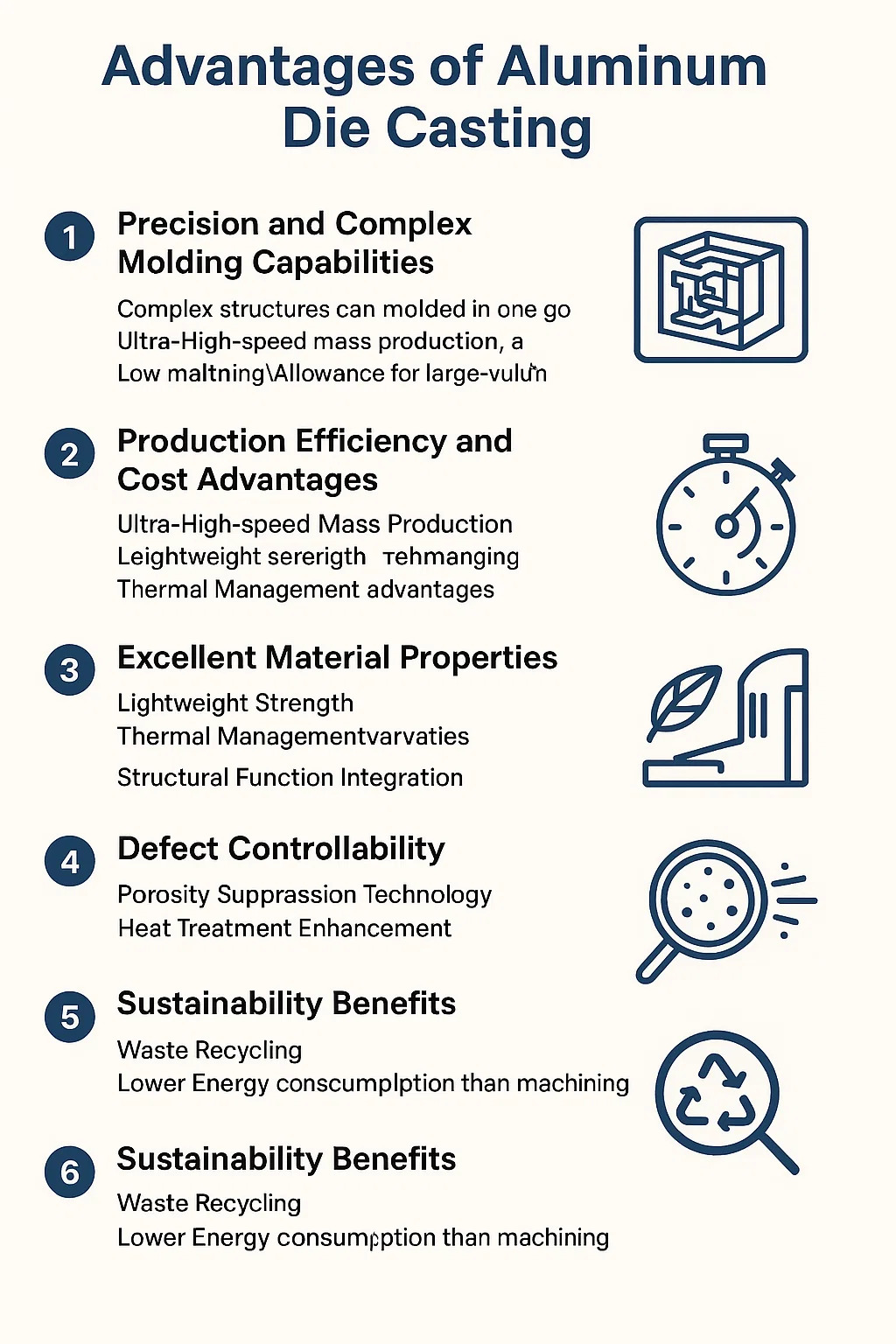

 English
English русский
русский Español
Español

